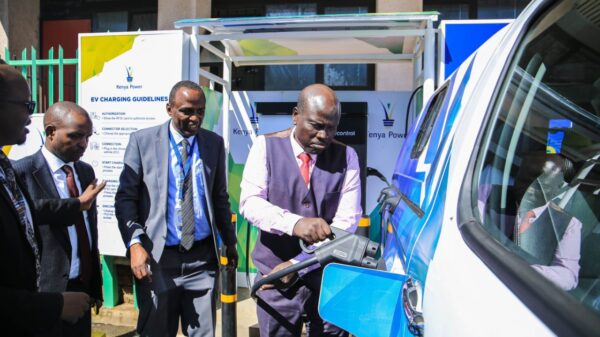NAIROBI, Kenya, Feb 25 – Many investors disillusioned about the viability of the stock market and its returns have been asking what other investment options are available. One increasingly attractive option is the Infrastructure Bond. But how many Kenyans know about it and even of greater concern, how many can afford to invest in it?
Infrastructure bonds are issued to help fund projects such as those for land or air transport, electricity generation and transmission or distribution of water supply. The bonds carry tax advantages which enable funding at lower interest rates.
The Government of Kenya Infrastructure Bond aims to raise Sh18.5 billion. Its primary purpose is to fund infrastructure projects in the country in line with the Vision 2030. Among these programmes are water and sewerage irrigation. This involves the construction of dams and construction of irrigation infrastructure.
It was somewhat unexpected to see the infrastructure bond oversubscribed by 45 percent or Sh26.9 billion against the Sh8.5 billion that the government had sought considering that little was done in terms of investor education prior to its floatation. This is evidence that investors have a great appetite for alternative investment options and want to move away from the traditional ones, particularly listed stocks and interest from deposits in financial institutions.
It is mandatory for those interested in investing in the bonds to have Central Depository and Settlement Corporation (CDSC) accounts with the Central Bank of Kenya (CBK). Investors can open the accounts in Nairobi as well as one of the four major towns in the country, Nairobi, Mombasa, Kisumu and Eldoret.
The minimum investment is more or less affordable at Sh100,000 and thereafter in multiples of Sh50,000. However, interest from retail investors is minimal. This may be attributed to the unfavourable state of the economy, misinformation about the bond and most probably fading hope after many burnt their fingers in the Nairobi stock Exchange (NSE). The Capital Markets Authority may also be faulted for providing little, if any, investor education while the short window probably left little time for investors particularly those with lower incomes to acquire funds to finance the investment venture.
With the all share Index reaching five year lows of about 2,600 points, the infrastructure bond which will also be listed for trading at the NSE will surely be hard to ignore particularly by institutional investors considering that it promises investors 12.5 percent annual return from Government over the next 12 years. The 12.5 percent interest payments will be withholding tax exempt and be paid semi annually with principal repaid in 2015, 2017 and 2021 as shown below:
February 16th 2015 – 43 percent of the outstanding principle amount
February 13th 2017 – 40 percent of outstanding principal amount
February 8th 2021- Final redemption of all outstanding amounts.
In addition, any amount up to Sh100,000 will be redeemed fully at amortization period. This means that upon the expiry of the term, investors will be entitled to the invested sum plus interest as per the terms agreed upon.
The maximum investment amount by any single investor is Sh10 million. It should also be noted that investors in the infrastructure bond will be suspended from investing in subsequent government securities.
In the event that the CBK, for some reason, is unable to meet redemptions at the forecasted rate, it will rediscount the bond at three percent above the prevailing market yield or coupon rate whichever is higher. This however has to be upon written approval from the NSE.
Like any investment venture, prudent investors should do their homework before rushing to the infrastructure bond. To begin with is the time it will take to float the bond. It is estimated that it would take between nine and 12 months to float the bonds. It must be known that the flotation of bonds is a relatively new concept in Kenya. The successful floatation of a bond requires a great deal of investor education, legalities and a great deal of analysis.
Major considerations in investing in infrastructure bonds are the inflation and interest rates. Prices of bonds fall when interest rates rise. This is basically a result of reduced demand as investors look at interest rates as a source of additional income. It should be noted that the idea behind investing in bonds is reduced returns on alternative investment options including interest rates on deposits.
Like other infrastructure bonds, this one will not offer any protection against high inflation since the rate of interest they offer is pre-determined. The amount depends on the market value of the bond. There is also no assurance of getting the full investment back.
It is worth noting that the infrastructue bond offers higher coupon rates for the 6-year and 8-year bonds than other yields. On the downside however, the 12 year redemption structure for the bond is lower than the yield of a comparable bond.
There are two main features of the bond. The first is that there is no opportunity of making a capital gain if the interest rate environment were to remain favourable. The downside is limited as one can always hold the bond till maturity when it will be redeemed at par. The second is like any investment option and particularly with investing in the stock market, the infrastructure bond is only viable if you are investing for the long-term.
It is often said that investing in such a bond goes against the common investment principle “past returns are not indicative of future performance.” With infrastructure bonds, returns are market determined and therefore the past may serve as an important indicator of what may or may not unfold in future.
Despite the attractiveness of the returns offered by the infrastructure bond, I am of the opinion that investors should approach the infrastructure bond with caution. This however will be determined by the investors risk profile and investment objectives.
By risk profile, I refer to the common investment principle of risk and return. It is normally believed that the higher the risk, the higher the return. However, some investors are better able to bear higher losses than others perhaps because of their net worth or investment strategy. In the same respect, investors with a huge investment portfolio should not shy away from the infrastructure bond.
Investment strategy in terms of diversification and the duration of investment. Investors wishing to diversify their investments to spread the risk of loss should consider the infrastructure bond as a worthy investment option. It is also a proven fact that long-term investors particularly in the stock market often reap substantial returns from their investment. Similarly, investors in the infrastructure bonds with long-term investors will earn favourable returns. The bond is a no go zone for short-term investors.
All in all, it is good to see the government take a step in the direct direction as it is high time that we looked at domestic borrowing to finance development projects in the country. Time will tell whether floating the bond was the right decision in the first place.




































